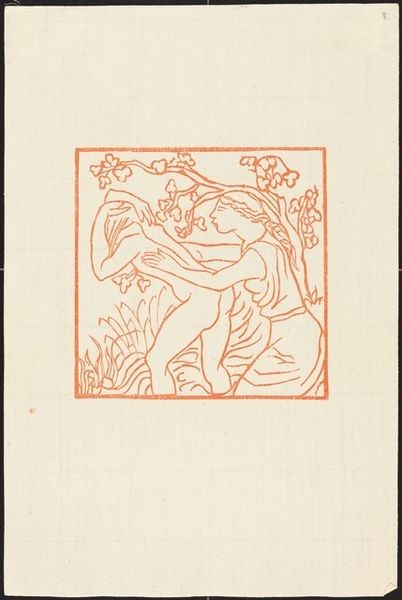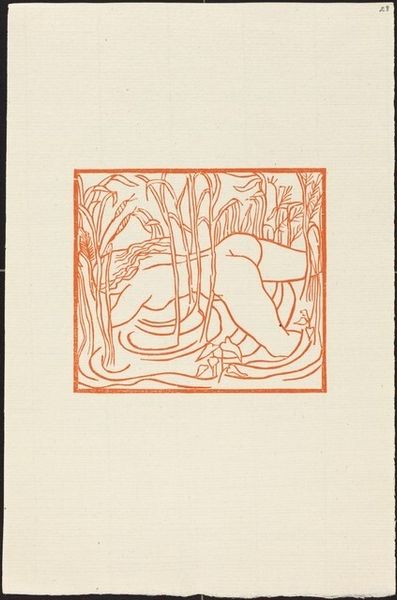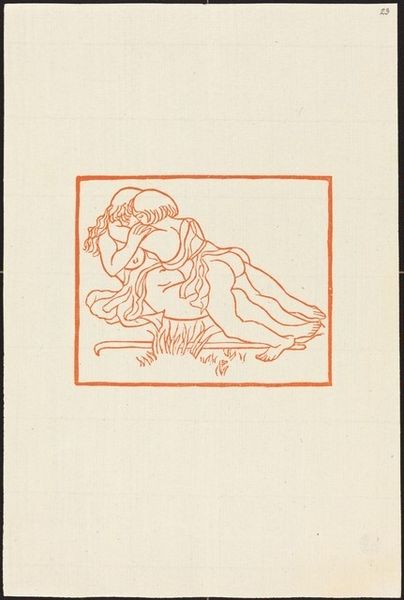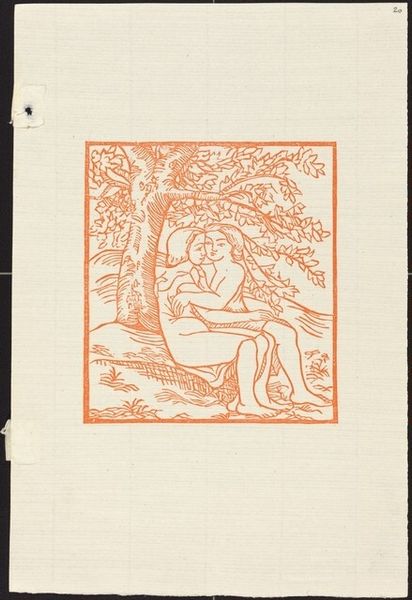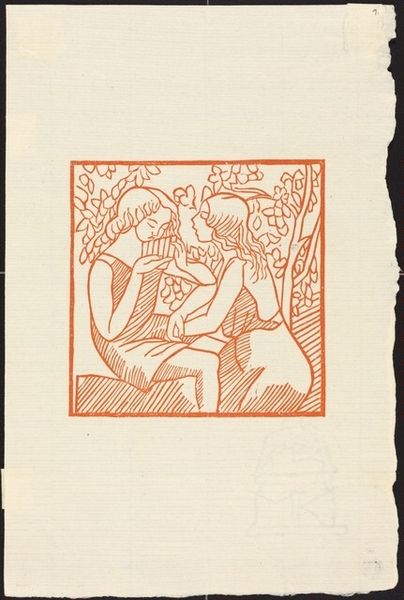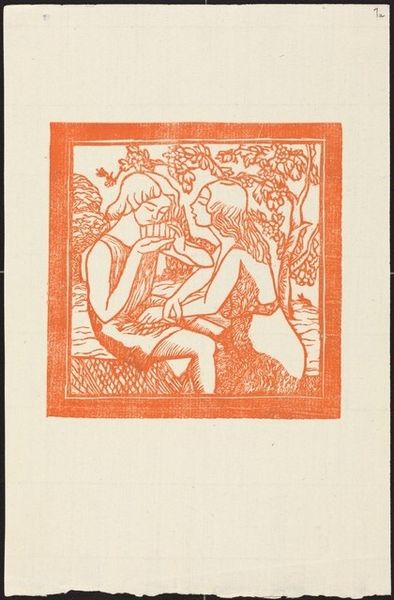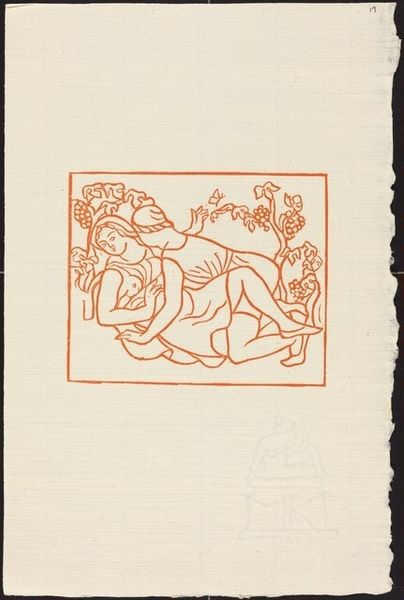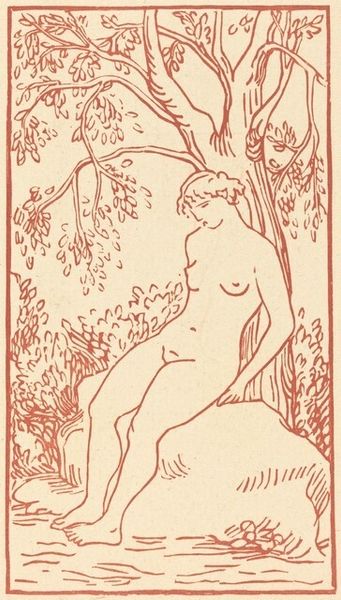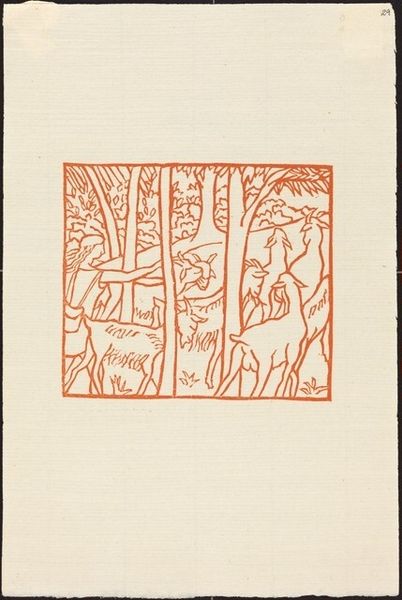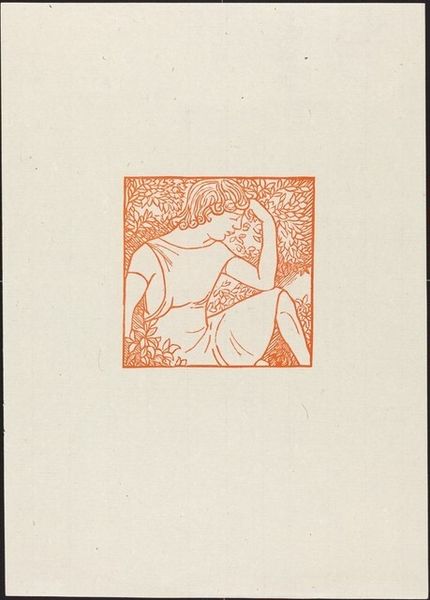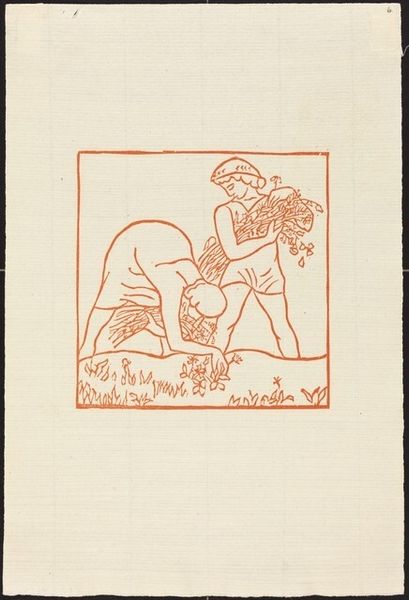
Third Book: Daphnis Lifts Chloe Up (Daphnis soulevant Chloe) Possibly 1937
0:00
0:00
#
pen drawing
# print
#
pen illustration
#
old engraving style
#
junji ito style
#
ink line art
#
ink drawing experimentation
#
pen-ink sketch
#
pen work
#
coloring book page
#
doodle art
Copyright: National Gallery of Art: CC0 1.0
Curator: Welcome! We're standing before Aristide Maillol's "Third Book: Daphnis Lifts Chloe Up," possibly from 1937. It's a print, rendered with what looks like confident strokes of pen on paper. What do you think? Editor: Immediately, it feels like a memory surfacing – a dream of Arcadia, maybe. The figures have this gentle, flowing quality, as if they're almost breathing off the page. It's classically simple, almost Spartan. Curator: Absolutely. Maillol was deeply engaged with classical themes and forms. There’s a powerful embrace of idealized naturalism, linking the human form with nature itself, in an escape from modern industrial life and horrors from both World Wars. These figures embody a specific kind of pastoral idealism – recalling ancient Greece, a space for romantic idylls away from the socio-political strife and increasingly mechanized realities of early twentieth-century Europe. Editor: And yet, there's also something slightly unsettling about the stark simplicity. It feels…unfinished, like a preliminary sketch rather than a fully realized work. This piece reminds me that beauty often resides in the in-between places, in the quiet anticipation of the final act. Curator: I agree! The incompleteness lends it an immediacy, a directness. You see Maillol grappling with the figures, their weight, their relationship. It pulls us into the creative process. In many ways, the print medium aided in creating accessible forms of disseminating and idealizing not only the natural, but also the nude, human form. Editor: You're right, seeing the hand of the artist makes it much more human. And considering its potential date – the shadow of conflict looming large – it’s almost defiant in its gentle tenderness. Is the original book of "Daphnis and Chloe" really about this idyllic beauty though? Curator: Hah, absolutely not. It includes shipwrecks, invasions, and pirates, a microcosm of early Roman conflicts, with a patina of grace added much later. Editor: So, Maillol is idealizing more than illustrating here, a way to think about the space beyond struggle, through figures emerging from that space itself. Curator: Yes. He’s not merely depicting a scene, but almost inventing a sanctuary for these bodies. This offers not just escapism but also a reminder of what could endure beyond social pressures, artifice and unrest. Editor: So, it’s less about running away from reality and more about holding onto hope within it. I'm glad to be reminded of that quiet possibility today. Curator: Indeed! Maillol invites us to do just that – to find that quiet strength, right here, in the embrace of human form and memory.
Comments
No comments
Be the first to comment and join the conversation on the ultimate creative platform.

